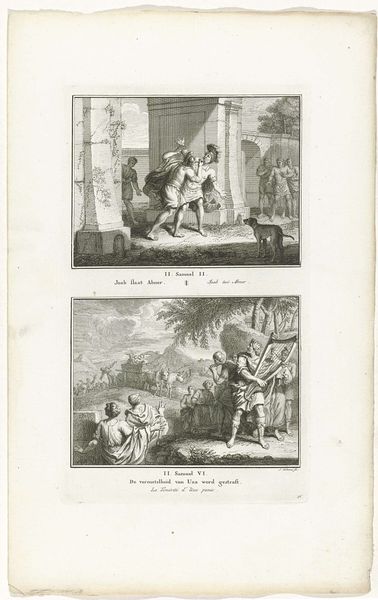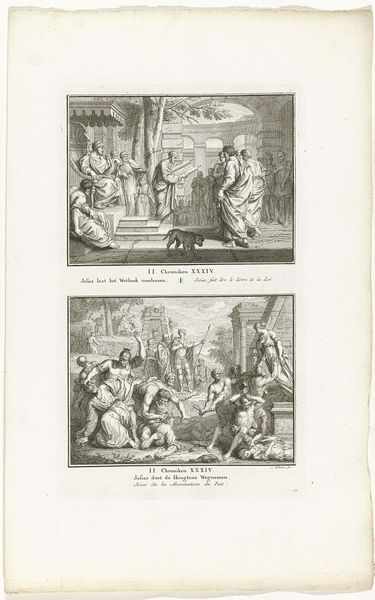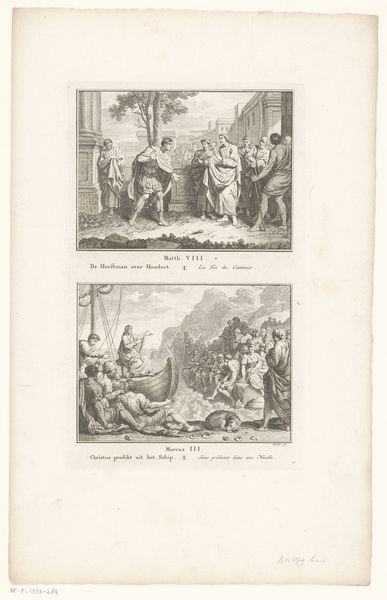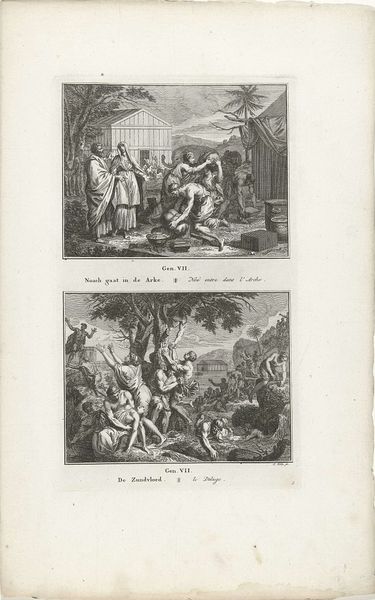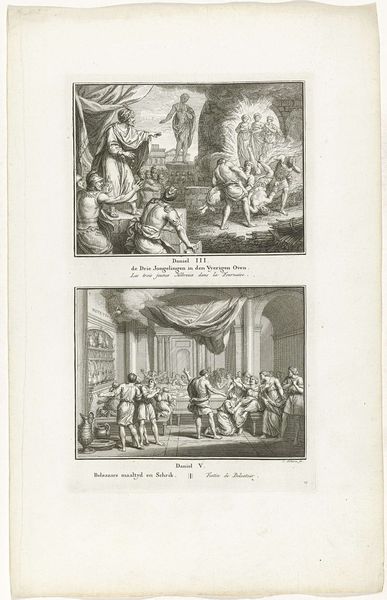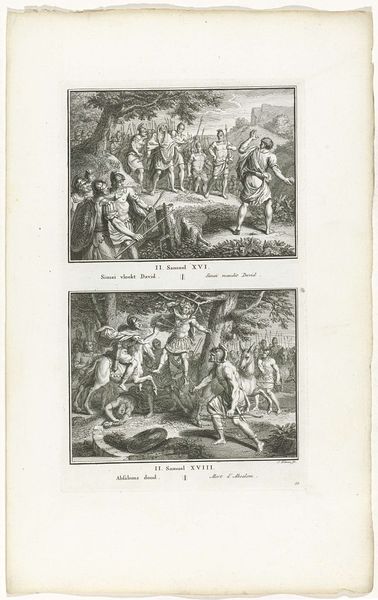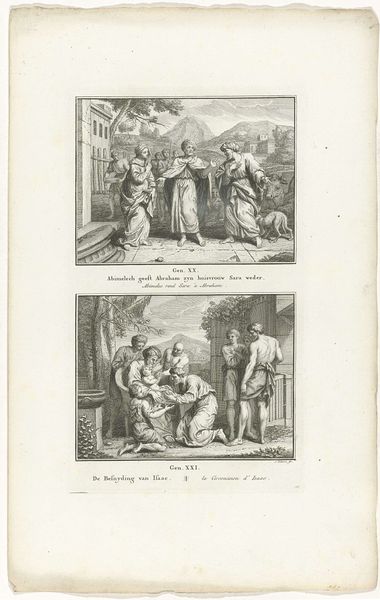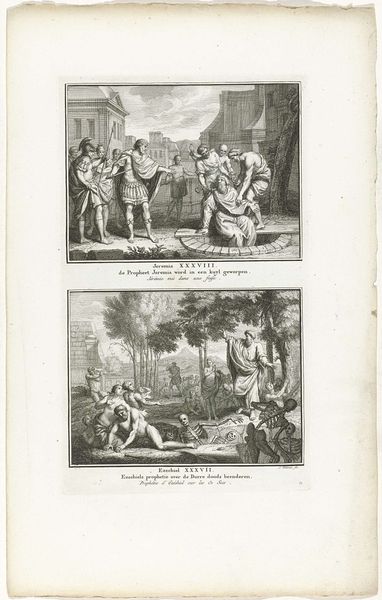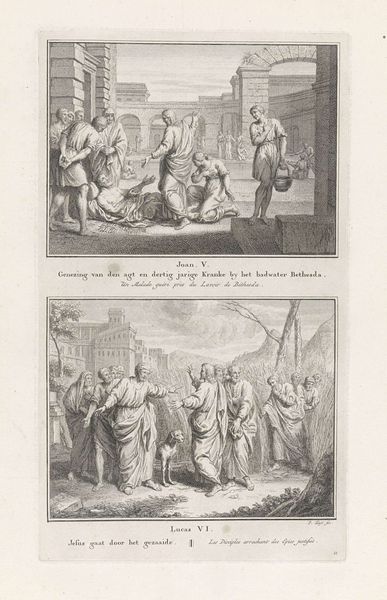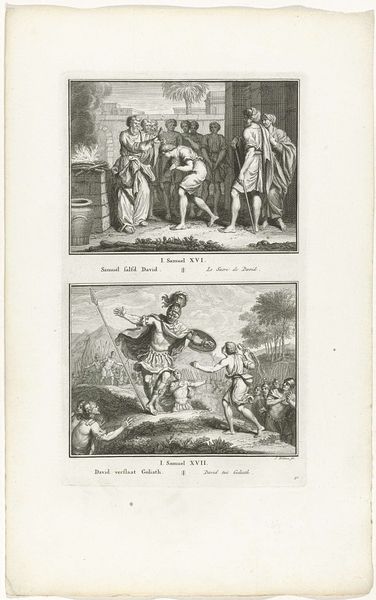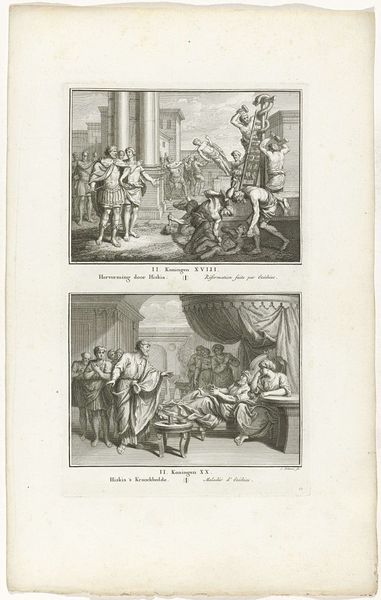
David vervolgt de Amalekieten na het verbranden van Ziklag en David beveelt de Amalekiet te doden die vertelde Saul gedood te hebben 1791
0:00
0:00
print, etching, engraving
#
neoclacissism
# print
#
etching
#
history-painting
#
engraving
Dimensions: height 325 mm, width 194 mm
Copyright: Rijks Museum: Open Domain
Editor: We're looking at "David Pursuing the Amalekites after the burning of Ziklag and David ordering the Amalekite to be killed, who had announced Saul’s death," an engraving by Jacob Folkema, created in 1791. I’m immediately struck by the two separate scenes, almost like a comic book layout, but dealing with some heavy biblical moments. How should we interpret a print like this, juxtaposing two related narrative scenes? Curator: A fascinating question. Considering its context, the late 18th century saw a rise in Neoclassicism, where artists like Folkema looked back to classical antiquity and, significantly, to biblical stories as models of virtue, leadership, and justice. This print, displayed in a domestic setting, reinforced societal values through visual storytelling. What's the social impact of pairing those narratives, one of grief and vengeance and another about law? Editor: It almost seems to make a moral argument through juxtaposition. The upper scene has an almost frenzied energy to it; then the lower image offers a stately form of, maybe justice? Was this print trying to guide viewers to see the 'right' way of reacting? Curator: Exactly! This engraving serves a public role, instructing viewers on appropriate responses to transgression against societal order. It suggests vengeance and judgment within a socially sanctioned framework. Considering Folkema's position in the Dutch printmaking industry, how might the commercial aspect play into the visual language employed here? Editor: So, it's not just art for art's sake, but actively involved in shaping societal understanding? Knowing these images would have been widely circulated, the directness of the imagery really highlights how powerful this could be. Curator: Precisely. Understanding this print through its social function helps us appreciate the public role of art. Editor: I never thought about prints carrying such potent socio-political messages back then. Curator: That’s the exciting thing about digging deeper; we always discover more about the role of art within social, political, and historical frameworks.
Comments
No comments
Be the first to comment and join the conversation on the ultimate creative platform.
